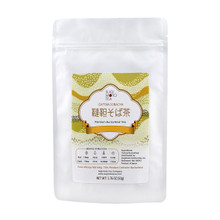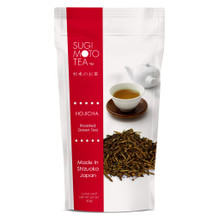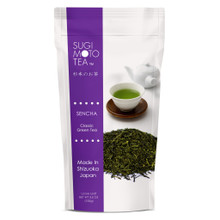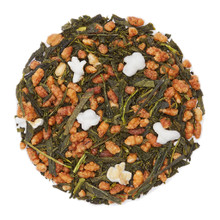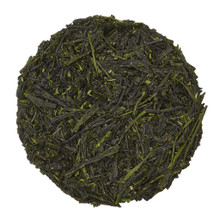Japanese Tea Ceremony Guide Part 1: History
In Part 1 of our Japanese tea ceremony guide, you’ll learn about how the Japanese tea ceremony started and the influential figures that contributed to its development.
Guide Contents:
Japanese Tea Ceremony History | Early Beginnings and Influential Figures
What Is the Japanese Tea Ceremony?
The Japanese tea ceremony, also known as Sado, Chado, and Chanoyu is a time-honored way of serving matcha. Beyond just the consumption of tea, the Japanese Tea Ceremony also places value on the art of preparing and serving.
There are different ways of conducting tea ceremonies based on the school of thought the practitioner studied under. The three main tea schools in Japan are Urasenke, Mushanokōjisenke, and Omotesenke. They’ve been dubbed as the “main” schools because of their large following (both inside and outside Japan) and since they can trace their lineage back to tea master Sen no Rikyu. In fact, these schools all have “sen” in their names in honor of the tea master.
Other schools and styles have been established outside the Sen schools, with each passing on the teachings and traditions of their founders.
Each aspect of the ceremony is well thought out with the guest’s happiness in mind and in line with the teachings of the tea masters who have shaped the ceremony.
Types of Japanese Tea Ceremony Based on When It’s Conducted
Depending on the time of the day and year, there’s a different Japanese Tea Ceremony that will be conducted. Here are some of them:
- Asa-cha -- Held during a cool morning during summer
- Akatsuki-no-chaji -- Cold winter morning
- Shoburo -- Special tea ceremony in May wherein the ro (sunken hearth in the tatami flooring used during the winter) will be closed off and will transition to the use of a portable brazier (a stove that uses charcoal as its heat source)
Types of Japanese Tea Ceremony Based on Formality
A Japanese tea ceremony can either be a “chakai,” which is a more casual event where tea is served alongside sweets. It can also be more formal, such as in the case of the “chajii.” A chaji involves two types of tea, a meal called a “kaiseki,” and moments devoted to art appreciation.
Chakai
Compared to the chaji, a chakai is more informal. However, like the chaji, the guest list is also reserved only for those invited by the Teishu (tea ceremony host and teacher). The only exception are the public events typically conducted by museums and Japanese gardens, which would be open for everyone.
While a chakai may draw more guests, only the first two or three guests (Shokyaku, Jikyaku, Teishi) will be served directly by the Teishu. If there’s a Hanto (Teishu’s assistant) present, then the rest of the guests will be served by the Hanto.
In events like these, the actual preparation of the tea could also fall on a student of the Teishu. Of course, the Teishu supervises this process and is also there to talk about the pieces in the tearoom, such as the utensils, teaware, and the Chabana (tea flowers).
Chaji
In contrast, a chaji is the full-length version of the chakai, involving an entire meal and more formalities. It follows a flow of events based on the principles introduced by tea masters Murata Juko, Takeno Joo, and Sen no Rikyu.
When Did the Tea Ceremony Start?
Early Mentions of the Japanese Tea Ceremony in Historical Text
One of the earliest mentions of the Japanese tea ceremony is in the ancient Japanese historical text Nihon Koki. It describes how Buddhist priest Eichu served tea to Emperor Saga on the west shore of Lake Biwa sometime in the early 9th century.
Murata Juko — Transforming the Norms of Tea Ceremonies
The foundation of the Japanese tea ceremony is credited to Zen Buddhist monk and tea master Murata Juko. Aside from the changes he proposed to the way the ceremony was conducted, Juko was also the first person to list the responsibilities of the host and elevate it into spiritual practice. Juko’s Zen roots can be seen in how his theories seemingly suggest that the practice of tea can help lead to enlightenment.
Juko laid out his proposed changes to the tea ceremony in two documents:
- Shuko Mondo is said to have been an account of his conversations with the Shogun Yoshimasa. Here, Juko laid out its values of tranquility, respect, purity, and reverence.
- Kokoro no Fumi is a letter Juko wrote to one of his students where he talked about the changes he had proposed for the tea ceremony. Here, he talks about how the practice of tea can help in learning more about oneself. Juko also championed for the equality of Chinese and Japanese cultures, which at that time, tipped in favor of the more revered Chinese culture.
Juko introduced a style of tea ceremony (later called wabicha,) which differed from the tea ceremonies being done during that time (shoin) that were popular with the upper class. Previously, shoin-style tea ceremonies were done in the homes of the aristocracy and were used as a way of showing one’s power and influence in society.
- To achieve the more serene and simpler gatherings, Juko set the tearoom size to four and a half tatami mats (Koma), or about 10 sq. m. This was smaller than the norm during that time. Instead of being held at ornate reception rooms, Shuko’s style led to the construction of smaller and simpler rooms designated for tea ceremonies.
- Previously, the tea ceremonies exclusively used expensive karamono (Chinese teaware). In contrast, Juko’s style called for the use of both the pricer karamono and the more affordable Japanese wamono. The Japanese bamboo chashaku replaced the Chinese ivory or silver scoop and more rustic Japanese bowl designs like the Shigarakiyaki and Bizenyaki tea bowls were featured.
- Juko strived to create a tea ceremony that had an atmosphere of “chill,” “withered,” and “lean,” which were terms derived from Chinese poetry. This showed in the aesthetic qualities of the rough, everyday items he combined with prized Chinese pieces. For example, large jars imported from the Philippines were used for tea storage and were placed next to expensive paintings that were previously owned by shoguns.
Takeno Joo — Introduction of “Wabi” Aesthetic
Juko’s wabicha style made the tea ceremony accessible to commoners and flourished with the help of those who followed his teachings. One of these was Takeno Joo, who was taught by Juko’s students. Joo continued the development of Juko’s style by combining it with his background in Japanese literature, particularly, waka poetry, which is a form of court poetry.
A concept closely associated with Juko’s style is wabi-sabi, which is about finding beauty in imperfection and transience. Joo built upon the changes that Juko proposed, such as the use of both Chinese and Japanese teaware and having smaller, simpler tearooms.
He simplified the tearooms, with structural changes to the construction such as:
- Removal of the wooden paneling from the paper sliding doors
- Introduction of a simplified version of the “daisu,” or the grand-sideboard used to serve tea
Joo’s influence in the development of the tea ceremony helped put his hometown, Sakai, on the map as an important part of the history of the Japanese tea ceremony. Sakai’s importance in the development of the ceremony was cemented by his student and fellow Sakai native, Sen no Rikyu, who’s also known by the nickname chasei, or “tea saint.”
Sen no Rikyu — Laying the Foundation for Modern Tea Ceremony
Continuing the legacy of his teacher Takeno Joo, Sen no Rikyu introduced more developments to the tea ceremony. He adapted Joo’s wabi philosophy and included it in every aspect of the tea ceremony, from the aesthetics of the tearoom to the etiquette and meaning behind it.
One of the most popular changes Sen no Rikyu made to the physical environment of the ceremony is the “nijiriguchi” or “crawling-in” entrance to the tearoom. Guests literally have to bow low and crawl through the small opening to enter the tearoom. This represents humility and removes any class distinctions that may divide guests since everybody, regardless of their place in society, enters the same way. He is also credited as the designer of the Taian tea house, which has the size of just two tatami mats.
Aside from proposing structural changes to the tea ceremony rooms, he also introduced new practices to the ceremony itself. Sen no Rikyu preferred Japanese teaware and even designed teaware with local artisans. One example is Raku ware, which the potter Chojiro produced under his supervision.
The biggest tea schools these days follow the teachings of Sen no Rikyu and trace their lineage back to him since their founders were his great-grandsons. (See the Sen family tree here!)
Stay tuned for Part 2 of our Japanese Tea Ceremony Guide series — Japanese Tea Ceremony Guide Part 2: Philosophy and Tea Schools — which will be published on August 17. In that post, you can learn more about the philosophy behind the Japanese tea ceremony and the different tea schools that conduct the ceremony in the next part of this series.
Additional References:
- Zavadckyte, S. (2017). Japanese Tea: A Comprehensive Guide [Amazon Kindle]. Retrieved from Amazon.
- Okazura, K. The Zen of Tea [Amazon Kindle]. Retrieved from Amazon.
- van Driem, G. The Tale of Tea: A Comprehensive History of Tea from Prehistoric Times to the Present Day [Google Books]. Retrieved from Google Books.
READ NEXT: How to Brew Japanese Green Tea















